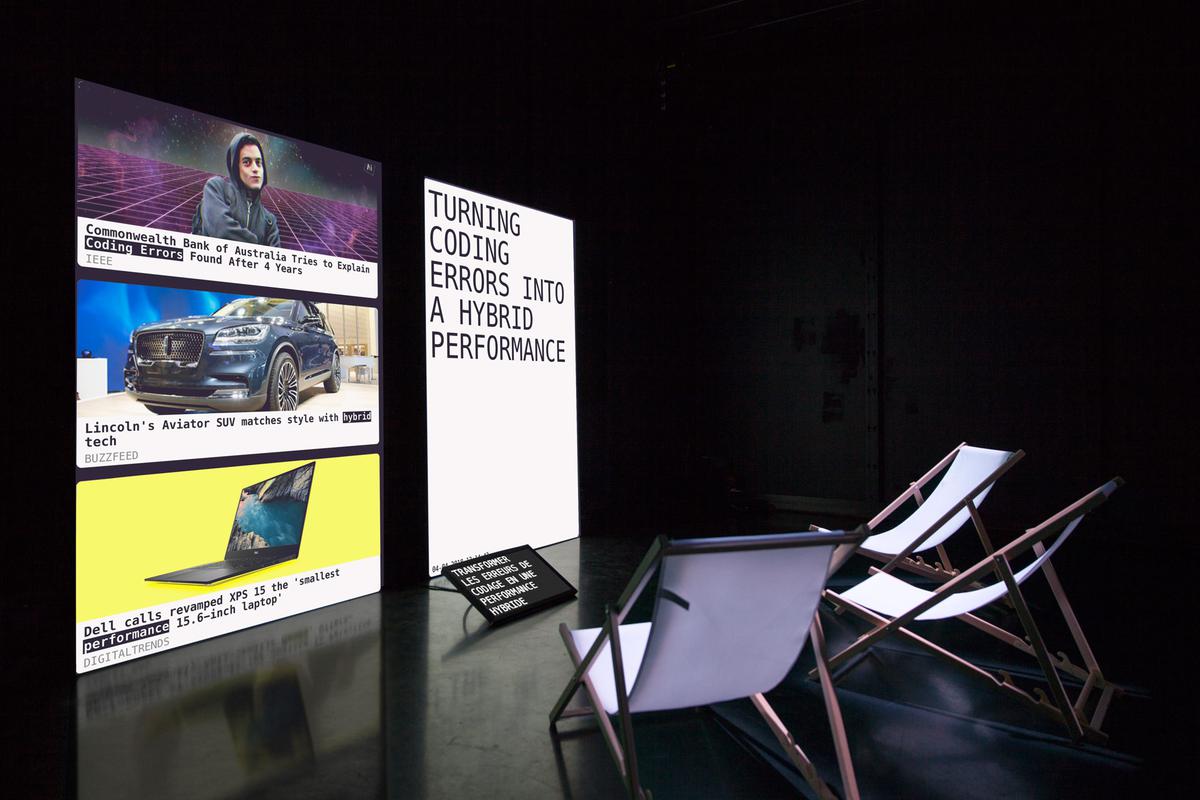Established artists at the Kochi-Muziris Biennale | photo credit: madhu krishnan
The biennial, which opens after three demanding years of the pandemic, will be expected to be a cornerstone. And while it is, the fifth edition of the Kochi-Muziris Biennale is much more – involving humour, sarcasm, resilience, joy, protest. We find that the mood is not as dark as in the previous version. “A lot of the artists who are participating were commissioned before the pandemic, which turned our lives upside down. They were invited for the collective resilience and resistance they were showing [responding to their realities] through their work. The exhibition has evolved since we’ve been with them for four years. And the pandemic has added another layer of meaning to it,” shared Mario D’Souza, Program Director, Kochi Biennale Foundation.
‘Everything is water, and we have to return to water’ by Sahil Naik
there are many more songs
A large scale installation at Aspinwall is by Goan artist Sahil Naik. He tackles the eradication of communities in ‘Everything is water, and to water we must return’, a story of a forgotten village. Curd in Sanguem, Goa taluka Salaulim was submerged after the construction of the dam in the 1980s. For a brief period each summer, the waters recede to reveal the ruins. And Kurdikar returns ‘home’, to clean up the ruins and sing it. “It’s a beautiful expression of hope, community and history,” says D’Souza.
“Naik has taken up the task of archiving and documenting each household. He has also interviewed everyone who remembers the village. At the biennial, a portion of the landscape has been reconstructed, and as you walk through it, you’ll hear Konkani songs – laments and prayers, but also stories of hope and love – in 5.1 surround sound. The idea is based on a Konkani proverb that Naik translated as: ‘To save a story, you have to tell it to as many people as possible.’ We will all become witnesses of this almost erased history.

Marta Tuomala Fincycling-Saumi-Parkele!
exercise bike protest
“One of the many video installations in the biennial is the work of Finnish indigenous Martta Tuomala, which shows her working out and speaking on an exercise bike,” says D’Souza. Fincycling-Saumi-Parkele! is a woman’s gritty protest against the politics of all-male austerity, and as the artist states on her website, it is “a combination of politics, dark humor and protest rap in the form of an indoor cycling exercise”.

Denovation’s ‘Predictive Art Bot’
Art, bots and IRL
An installation by Paris-based collective Desnovation takes real-time news and transforms them into art headlines. Titled ‘Predictive Art Bot’, it features an algorithm that automatically generates concepts for artworks by combining keywords from news and article headlines in real time. D’Souza explains, “It plays on the irony of how art-making can be quite insensitive and ostentatious, while still being heavily influenced by the suffering of the world.”
“This edition looks primarily at artistic practices from Asia, Africa and Latin America. There is a large ensemble of artists from these continents – to show the commonality of our context, but also the social and political realities of our times.”mario d’souzaProgram Director, Kochi Biennale Foundation
fort wall project
Street art hasn’t started to emerge yet and that’s because KMB is taking it slow and steady. “Instead of doing everything in the beginning, we’re running our programs across four months so there’s always something to hook up with,” says D’Souza. For example, the Fort Mural project will begin in January. “It pays homage to the mural, an art form that came before the advent of street art. But it will also look at the mural as a social space,” he says, sharing that 10- 12 artists have been invited to come and create the mural.
15 positions strong
While a few warehouses, including the Trivandrum warehouse in Mattancherry, are being added to the Student Biennale, the main events will take place at venues that “we know and have used in the past”. As D’Souza explains: “Because we are coming from pandemic fatigue, we are trying to keep the biennial contained, although we are still 15 places strong.”